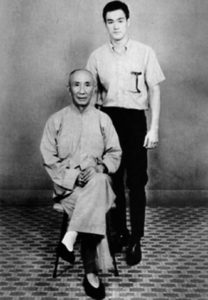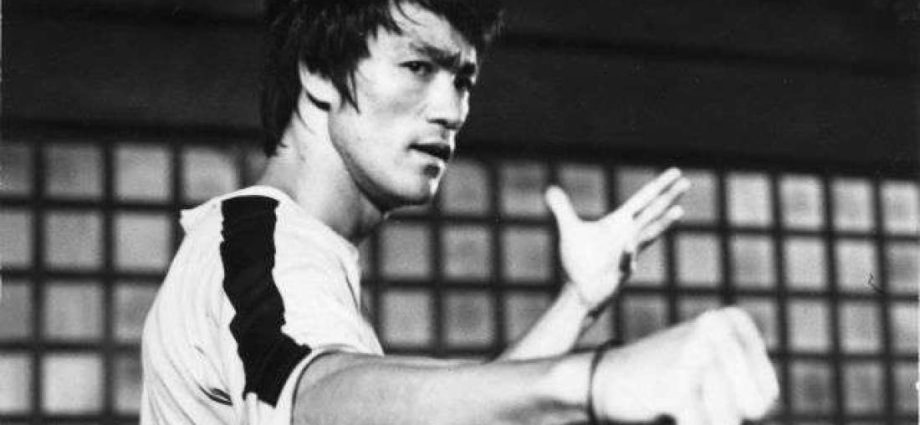It is safe to say that, in popular culture, there is no martial artist more famous than Bruce Lee. Named “one of the most influential people of the 20th Century” by Time Magazine, Bruce Lee is an iconic figure throughout the world, representing both martial arts and Chinese culture.
A recently re-released book, Bruce Lee, The Tao of Gung Fu: Commentaries on the Chinese Martial Arts, offers views into the formative thoughts of the legend that is Bruce Lee. Although published after Bruce Lee’s premature death, the book was mostly written by Bruce Lee (with edits by writer John Little). In fact, Bruce Lee, The Tao of Gung Fu, is the only book that Bruce Lee ever authored (more about this below).
Bruce Lee, The Tao of Gung Fu makes an interesting read not only from a martial arts perspective, but also historically, culturally, and philosophically. Although the book refers to “Chinese Martial Arts,” the writings are equally relevant to other martial arts. Truth is truth, regardless of style or origin of the art.
A word of caution: although the book does touch on Kung Fu techniques, it should not be viewed as a martial arts instruction manual.
On a personal note, Bruce Lee played an important role in my martial arts career. Through his movies – in particular, Enter the Dragon – I became interested in the martial arts. This led my parents to enroll me in judo at a young age (I started training in karate later).
A quick note on terminology: although the Chinese term Kung Fu (sometimes spelled Gung Fu) literally means “hard work,” it has come to refer to Chinese martial arts. In this article we will therefore adopt this common use.
Historical Context
In order to get the most out of this book, a historical context for the state of martial arts in the West at the time Bruce Lee rose to prominence can be very helpful .
The 1960s and 1970s saw a great awakening to Asian martial arts in the West. Veterans of the armed forces, who trained in karate and other martial arts while serving in Asia, were returning to the West. Upon their return, they started teaching and popularizing martial arts. Predominantly, those martial artists gained their training in Japan (e.g., Joe Lewis) and Korea (e.g., Chuck Norris), two countries that had a large presence of US armed forces post World War II. Comparatively, relatively few westerners had exposure to Chinese martial arts, as China was fairly closed to the West at that time. (A notable exception is Robert Smith, who trained in Tai Chi, Xingyi and Bagua in Taiwan, where he was posted by the CIA.)
Although Kung Fu was practiced in the US prior to Bruce Lee’s arrival in 1959, it was predominantly an art taught within Chinese-American communities (and sometimes used by henchmen of the Chinese underground). It may be hard to imagine today, but back in the 1950s and 1960s, Chinese communities in the US were relatively isolated. Generally speaking, Chinese Americans lived and socialized within their own communities, and were not well integrated into the rest of the US. It was only in the late 1950s and early 1960s that Kung Fu masters in the US started accepting non-Chinese students. Bruce Lee was one of those, although not the only one (Sifu Ark Wong in Los Angeles being another prominent example). Still, at the time of Bruce Lee’s rise to stardom, Kung Fu was generally unknown in the West, and completely overshadowed by karate (in its various Okinawan, Japanese and Korean variants).
To a great extent, it was Bruce Lee who introduced Kung Fu to the West.
Origins of Bruce Lee, The Tao of Gung Fu
The book Bruce Lee, The Tao of Gung Fu contains of a collection of Bruce Lee’s writings from 1963, i.e., four years after he moved to the United States. In those writings, 22 year-old Bruce Lee seeks to introduce the West to the then generally unknown martial art of Kung Fu. The 1963 writing resulted in a short, 97-page-long (unpublished) book Lee entitled Chinese Gung Fu: The Philosophical Art of Self Defense. This is only book that Lee ever authored. He did not publish the book, and instead continued writing in 1964, with the intent of expanding the content into a more authoritative volume. Lee later abandoned the intent to publish this material. Writer John Little assembled the original Chinese Gung Fu: The Philosophical Art of Self Defense book, as well as Lee’s additional writings, into what we now have as Bruce Lee, The Tao of Gung Fu.
Evolution
In 20th and 21st century martial arts there still is a strong tendency to elevate masters to the state of demigods. At this state, all past and present words of the master are treated as gospel – immutable truths that should be accepted and never challenged. This is a grave mistake. Martial artists, no matter how talented, are people. They evolve in their thinking and approach and, on occasion, they make mistakes. More importantly, critical thinking is vital for healthy growth in every field, including martial arts.
Bruce Lee, The Tao of Gung Fu is a good example of martial arts evolution. The book mostly represents the mindset of Bruce Lee prior to founding his own martial art, Jeet Kune Do, in 1967. The book is therefore best viewed as a snapshot of Lee’s thinking as he started questioning the ways that the so-called “classical” Chinese martial arts of the 1960s were practiced, and before he came to his own as an independent martial artist.
Introduction to Kung Fu
Bruce Lee, The Tao of Gung Fu opens with an introduction to Kung Fu, an art previously unfamiliar to the Western practitioner. Lee paints Kung Fu as a system of martial arts for self-defense, with roots extending more than 4,000 years, and which has been refined over generations.
Bruce Lee states the purpose of Kung Fu as follows:
“The object of gung fu is for health promotion, cultivation of mind, and self-protection.”
Later in the book, Lee states:
“To the Chinese, gung fu is a Way of training the mind as well as a Way of life.”
This parallels the transition karate made in the early 20th century, from a “jutsu” (術 method) to a “do” (道 way of life). Gichin Funakoshi (1868-1957) captured this in his famous quote:
“The the ultimate aim of Karate lies not in victory or defeat, but in the perfection of the character of its participants.”
It is interesting that Bruce Lee adopts this view as well. The history of Chinese martial arts parallels that of Okinawan karate. In the Okinawan martial arts world, karate did not term itself a “do” until it was introduced to Japan in the early 20th century. In Japan, karate was influenced heavily by Jigoro Kano’s Japanese martial art of Judo. Likewise, in the late 19th and early 20thcentury, as Chinese martial arts attempted to move “upmarket,” and appeal to a broad audience of educated people, they adopted a connection to a “way of life.”
Interestingly, it does appear that the Bruce Lee absorbed the “way” of Kung Fu early in his life. For example, in Hong Kong, the young Bruce Lee was constantly getting involved in street fights. In fact, the reason he was forced to depart Hong Kong for the US in 1959 is because his parents feared for his life following a street fight Lee had with a son of an organized crime family.

Bruce Lee and his Wing-Chun Instructor, Yip-man
